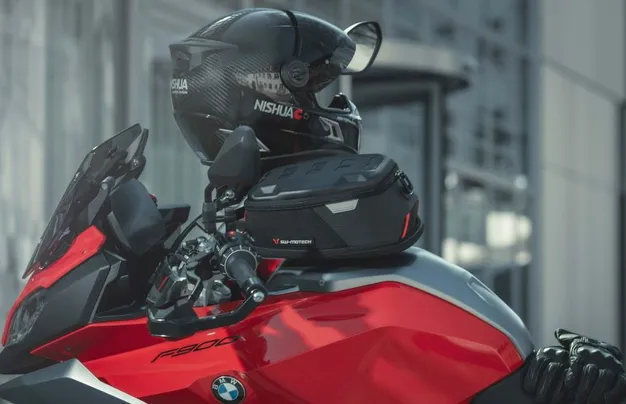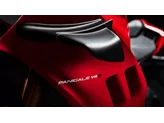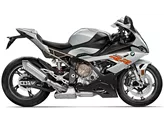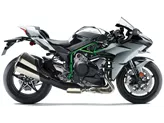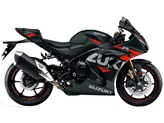Kawasaki Ninja ZX-10R 2015 vs. BMW S 1000 RR 2015

Kawasaki Ninja ZX-10R 2015

BMW S 1000 RR 2015
Overview - Kawasaki Ninja ZX-10R 2015 vs BMW S 1000 RR 2015
The Kawasaki Ninja ZX-10R 2015 and the BMW S 1000 RR 2015 are both high-performance supersport motorcycles that offer impressive power and handling capabilities.
In terms of engine specifications, both bikes have inline four-cylinder engines with similar displacements. The Kawasaki Ninja ZX-10R has a bore of 76 mm and a stroke of 55 mm, while the BMW S 1000 RR has a slightly larger bore of 80 mm and a shorter stroke of 49.7 mm. Both bikes have a compression ratio of 13 and produce similar power outputs, with the Kawasaki Ninja ZX-10R generating 200.1 HP and the BMW S 1000 RR producing 199 HP. Torque figures are also similar, with the Kawasaki Ninja ZX-10R delivering 114.3 Nm and the BMW S 1000 RR producing 113 Nm.

Kawasaki Ninja ZX-10R 2015
In terms of suspension, the Kawasaki Ninja ZX-10R features an upside-down telescopic fork at the front, while the BMW S 1000 RR has a telescopic fork. Both bikes have double disk brakes at the front with radial technology. The dimensions and weights of the two bikes are also quite similar, with both having a front tire width of 120 mm and a rear tire width of 190 mm. Both bikes have a 17-inch front and rear tire diameter. The Kawasaki Ninja ZX-10R has a wheelbase of 1115 mm, while the BMW S 1000 RR has a longer wheelbase of 1425 mm. The seat height of the Kawasaki Ninja ZX-10R is 813 mm, slightly lower than the 815 mm seat height of the BMW S 1000 RR. Both bikes have a fuel tank capacity of around 17 liters, with the BMW S 1000 RR having a slightly larger capacity of 17.5 liters.
In terms of strengths, the Kawasaki Ninja ZX-10R is praised for its strong engine in the upper rev range, making it a great basis for a racing bike. It also has a good chassis, providing excellent handling and stability. On the other hand, the BMW S 1000 RR is known for its superb shift assistant, allowing for smooth and quick gear changes. It also has an incredibly powerful and rev-happy engine, providing thrilling acceleration. The BMW S 1000 RR also offers a great range of accessories and has a race-ready data logging tool and calibration tool available.

BMW S 1000 RR 2015
However, both bikes have their weaknesses. The Kawasaki Ninja ZX-10R is criticized for its gear ratio being too long, resulting in less power in the lower rev range. Its traction control system also falls short compared to the systems found on top-tier bikes. On the other hand, the BMW S 1000 RR's chassis can quickly reach its limit in the hands of professional riders.
In conclusion, both the Kawasaki Ninja ZX-10R 2015 and the BMW S 1000 RR 2015 are powerful and capable supersport motorcycles. While the Kawasaki Ninja ZX-10R excels in its upper rev range and offers a good chassis, the BMW S 1000 RR stands out with its shift assistant, powerful engine, and range of accessories. However, it is important to consider the weaknesses of each bike, such as the Kawasaki Ninja ZX-10R's gear ratio and traction control, and the BMW S 1000 RR's chassis limitations. Ultimately, the choice between the two will depend on the rider's preferences and intended use of the motorcycle.
Technical Specifications Kawasaki Ninja ZX-10R 2015 compared to BMW S 1000 RR 2015
Pros and Cons in comparison
Pros and Cons in comparison
Kawasaki Ninja ZX-10R 2015

The ZX-10R was right in the middle during the test. It was not as fast and radical as the R1, Panigale, BMW and Aprilia. But it was also sportier than the Honda and Suzuki. While Honda and Suzuki would need completely new bikes to catch up with the top, Kawasaki would only have to give the ZX-10R a small update. But satisfied ZX-10R riders need not despair. The gap to the top is small enough to catch up with a few accessories. Because the ZX-10R has one decisive advantage. It has been on the market for a long time and there are enough parts available, including the necessary setup information. If you don't want to get involved in any experiments, take a Kawasaki and with a few simple steps you will also be at the top.
BMW S 1000 RR 2015

The BMW can still score points with hard facts in 2015. If you like top performance, you have to buy the BMW. It turns out incredibly powerful at the top and drives away the rest of the field from 200. Big and heavy riders will be able to benefit from this even more. BMW didn't make it easy for themselves with this bike and put together a very universal motorbike. If you were to do a comparison test with 50 different riders (from rookie to pro), the BMW would have the best average of all 1000cc bikes. The electronic chassis, but also the riding aids, make the pros fast and the beginners safe on the road. A top recommendation for a very broad target group. Very fast hobby riders will not be 100% satisfied with the standard suspension. If you don't want to modify the chassis, you should rather go for an R1M, a Panigale S or an RSV RF. If you want to convert anyway, the S 1000 RR is the strongest and most universal base. Surprisingly, the powerful machine also rides very well on country roads. All in all, it looks like a compromise, but it never feels like one in practice.
Price Comparison Avarage Market Price Kawasaki Ninja ZX-10R vs BMW S 1000 RR
There are a few key differences between a Kawasaki Ninja ZX-10R 2015 and a BMW S 1000 RR 2015. It takes less time to sell a BMW S 1000 RR with 77 days compared to 81 days for the Kawasaki Ninja ZX-10R. Since model year 2005 1000PS.de editors have written 51 reviews for the Kawasaki Ninja ZX-10R and 135 reviews for the BMW S 1000 RR since model year 2010. The first review for the Kawasaki Ninja ZX-10R was published on 1/11/2004 and now has more than 2,900 views. This compares to more than 4,000 views for the first review on BMW S 1000 RR published on 4/16/2008.
